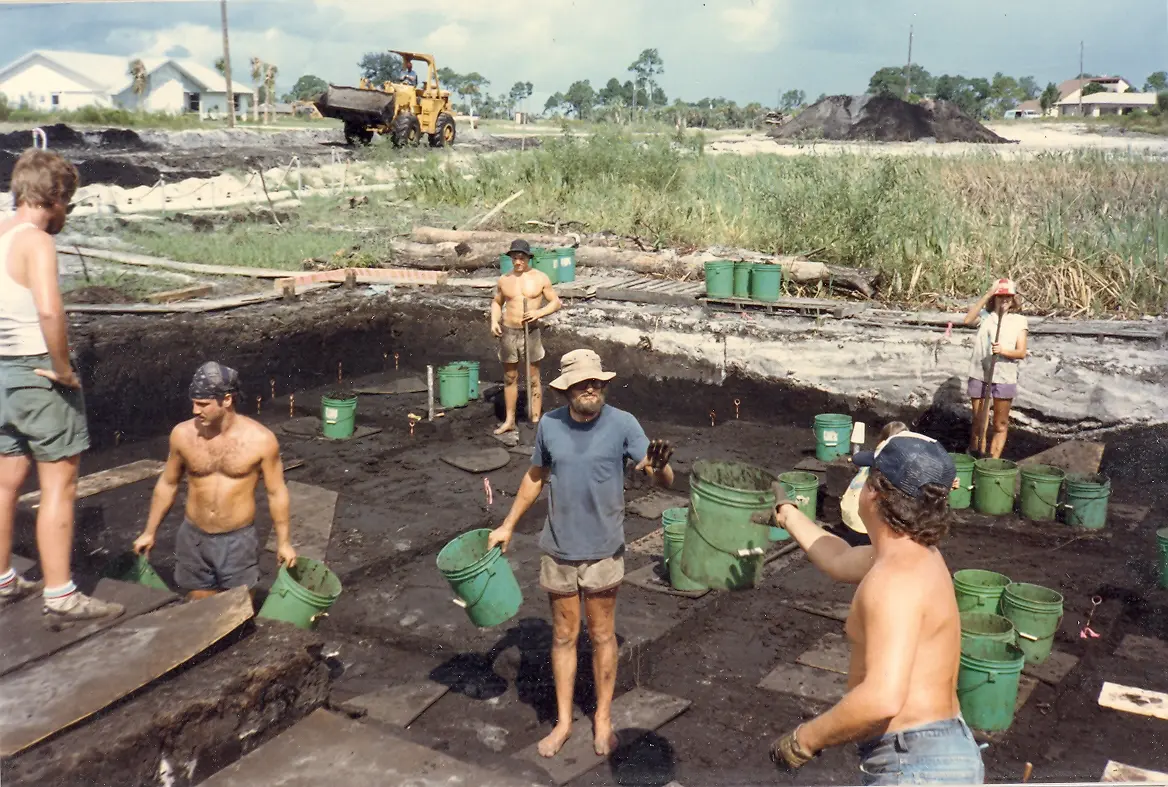The Windover Dig in Titusville, Florida was one of the most important archaeological discoveries in the world.
Nearly 200 ritualistically buried bodies were discovered, wrapped in the oldest woven cloth found in North America. The amazingly well-preserved remains were determined to be between 7,000 and 8,000 years old, making them 3,200 years older than King Tutankhamen and 2,000 years older than the Great Pyramid in Egypt.
The initial discovery of ancient human remains occurred in 1982, during construction of the Windover Farms housing development near the intersection of I-95 and State Road 50. Three archaeological digs were conducted between 1984 and 1986, and the fascinating results of those excavations attracted international attention.
The only comprehensive exhibition exploring the Windover People is at the Brevard Museum of History and Natural Science in Cocoa. The Florida Historical Society Archaeological Institute is in the process of significantly expanding and improving the educational, interactive display.
The Brevard Museum is presenting a “Windover Weekend” November 13 and 14. The exhibit preview Friday evening will include gourmet hors d’oeuvres, wine and beer, live music, and special guests. The exhibit opening will continue on Saturday with a panel discussion called “Windover Archaeology: The Next Generation.” Tickets for all of the activities are available now at www.myfloridahistory.org.
While building upon and refreshing elements of the existing Windover People exhibition, this substantive expansion includes a new, functional archaeology lab for students and visitors to have a hands-on experience, a new video about the Windover Archaeological Dig, and the unveiling of Windover Woman, an artistic interpretation by sculptor Brian Owens based on forensic reconstruction of a Windover skull. You will be able to look into the eyes of a person who lived in Florida more than 7,000 years ago.
“Brian Owens is making great progress on his bust of the Windover Woman, and I feel lucky to have had a few sneak peeks at his work in progress,” says Patty Meyers, director of the Brevard Museum of History and Natural Science, and the Florida Historical Society Archaeological Institute.
“I also recently had the opportunity to visit Florida State University and meet with Drs. Thomas and Marrinan to discuss the loan of Windover artifacts for the exhibit,” says Meyers. “We are still working out the details, but we will be able to share some amazing items with our visitors.”
Visitors to the Brevard Museum over the past few decades will remember that the Windover exhibit features a recreation of the archaeological dig. That portion of the exhibit has been made even more realistic, and a new recreation of an archaeology lab is being added. The lab display is modeled after the area at FSU where work is conducted on the Windover artifacts, from the style of lab table used to the linoleum flooring.
“For every hour an archaeologist spends in the field, approximately five or six hours are spent in the lab,” says Meyers. “With a background in human osteology, I have spent a great many hours in the lab. I am excited to be using this experience to design hands-on activities, which will allow visitors to discover how the secrets of the Windover population were revealed through osteological analysis.”
With only a couple of exceptions, the Windover People were ritualistically buried and placed in the same fetal position, lying on the left side. The heads were pointed west, with their faces to the north. The deceased were wrapped in what archaeologists believe is the oldest existing woven fabric in the world. Several branches were lashed together to form a tripod that held each body submerged underwater, creating a pond cemetery.
The anaerobic environment of the peat bog combined with a remarkably favorable Ph balance in the pond allowed for exceptionally well-preserved burials. Archaeologists discovered that ninety-one of the skulls uncovered contained intact brain matter. The stomach contents of one ancient woman indicated that her last meal consisted of fish and berries. DNA tests on these Archaic Period remains proved that the same families used the site as a burial ground for more than a century.
Experience “The People of Windover” as the improved and expanded exhibition opens at the Brevard Museum of History and Natural Science, 2201 Michigan Avenue, Cocoa.

